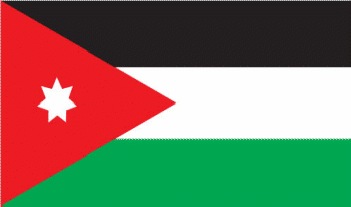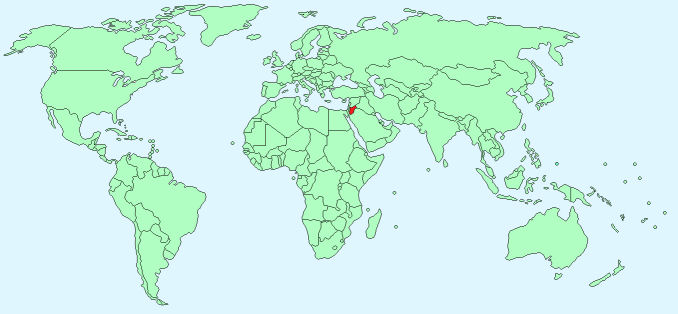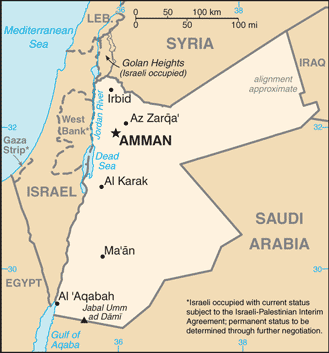Jordan


Continent – Asia
Region – Middle East
Size – 89,342 km²
Geography – mostly hot, dry desert
Language – Arabic
Religion – Sunni Muslim 92%, Christianity 6%, other 2%
Monetary Unit – Jordanian Dinar
Natural Resources – Oil, phosphates, potash
Agriculture – citrus, tomatoes, cucumbers, olives, strawberries, stone fruits; sheep, poultry, dairy
Industry – clothing, fertilizers, potash, phosphate mining, pharmaceuticals, petroleum refining, cement, inorganic chemicals, light manufacturing, tourism

Neighbouring Countries – Syria, Iraq, Saudi Arabia, Israel, West Bank
Population – 7,930,491 (2014 estimate)
Population Growth Rate – 3.86%
Average Life Expectancy – 74.1
Capital City – Amman (1,179,000)
Highest Mountain – Jabal Umm ad Dami (1,854m)
Longest River – Jordan River (251 km)
Climate – Hot summers 28°C to 32°C, warm winters – 12°C to 22°C
Yearly Rainfall – 120 cm (approx) mostly in September to February
Plant Life – semi tropical shrubs and bushes, acacia, banana, black iris, cedar, cactus, eucalyptus, olive, pine
Animal Life – jackal, hyena, fox, wildcat, gazelle, ibex, antelope, rabbit
Bird Life – vulture, sand grouse, skylark, partridge, quail, woodcock, goldfinch
Harvard Reference for this page:
Heather Y Wheeler. (2015). Jordan. Available: https://www.naturalhistoryonthenet.com/Facts_Figures/Country_Facts/jordan.htm. Last accessed Monday, July 18, 2016
Facts and Figures Pages
